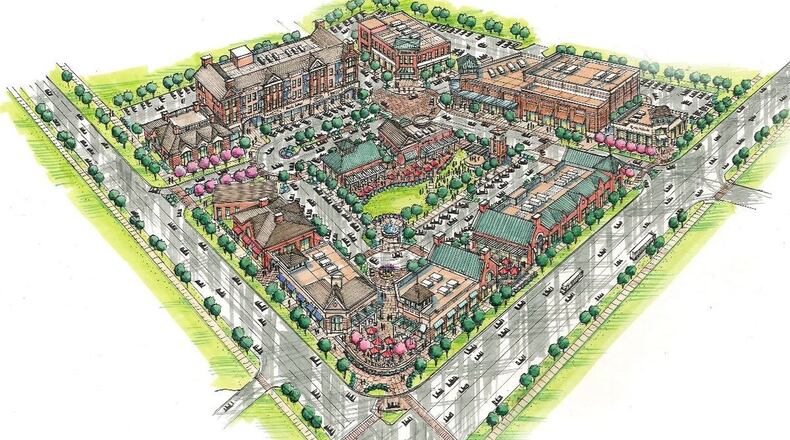The district would encompass 62 acres at the intersection of Ohio 73 and Ohio 741 in Springboro that includes the Wright Station development.
Homeowner James Boys also questioned the proposed city code changes including Edgebrooke Drive, a residential street, in the area encompasssed by the new zone.
“I have a beautiful shot of the sunrise,” said Boys of the view from his home on Fairway Drive. “It was one of the things that sold me on the house. It’s just a fantastic thing to wake up to.”
RELATED: Another piece of Wright Station puzzle falls into place
Boys spoke during a Springboro City Council public hearing Thursday preceding the first of three readings expected on the code changes replacing the city-center district with the urban village district zoning.
Boys expressed concern about multi-story sections and what turned out to be existing city code permitting structures, such as church steeples, as high as 85 feet.
Plans allowing for a seven-story hotel have been set aside.
Boys also noted Kleathers Pumpkin Patch, a popular season business housed in an historic home, is one of the next properties in line as the redevelopment spreads west.
“That would be a shame,” he said.
RELATED: Key Springboro corner to be redeveloped
Ridd expressed her concerns during a work session preceding the public hearing and formal council meeting.
“I just don’t think three-story belongs there,” Ridd said, suggesting such buildings be permitted elsewhere in the city.
Mayor John Agenbroad said the proposed code can still be altered before a vote anticipated on Jan. 2.
Councilman Jim Chmiel pointed to developments in Nashville as examples of how such multi-story projects can succeed in redevelopment areas.
“It’s really not as bad as it seems,” Chmiel said.
Councilmen Jack Hanson and Dale Brunner also expressed support, suggesting the proposed code changes could draw more developers.
“Are we limiting their options?” he asked.
RELATED: Springboro unveils 62-acre urban village plan
Planning Consultant Dan Boron and City Manager Chris Pozzuto told council the higher buildings were envisioned as encouraging multiple uses on different floors, with a restaurant or store on the ground floor and offices or residences above.
Pozzuto emphasized “market forces” would ultimately decide how high the development would stand.
The second reading of the proposed urban village district zoning changes is scheduled for Dec. 19, with the legislation expected to come to a final vote on Jan.2.
Boron also said townhouses are envisioned on edge of Wright Station and explained mixed uses were expected to help “manage the parking demand,” while encouraging “walkability”.
During his presentation, Boron said the changes, formed in 17 sections of the city code, would replace existing town-center zoning with new rules that would streamline the approval process, in part by bypassing the city’s Architectural Review Board.
“This will actually take out a month in the review process,” he said.
He began from an October 2015 aerial photo of the area around the Springboro IGA Plaza and supermarket.
“Five years later we are back with the plan for the redevelopment.”
Boron and Pozzuto emphasized the zoning was “laying groundwork” for the redevelopment to spread beyond the 6.5 acres owned by the city and being redeveloped as Wright Station.
“We are not taking property,” Boron said.
RELATED: Springboro pays $400K for “last piece” of redevelopment puzzle
Buildings are to feature four-sided architecture and require high-quality building materials.
“It’s impossible to have a back door,” Boron added. “It sets a very high standard for development in this area.”
Provisions allow homeowners to get home loans, even after their property is zoned for other uses.
Boys was the only person to question the proposed changes during the public hearing.
While concerned about the multi-story code sections, Boys expressed support for the overall idea.
“I think in general it’s a very positive thing for the city,” he said.
Still he cautioned about underestimating the long-term implications.
“The words here have meaning, they have meaning 20 years from now,” he said.
If all goes as planned, Boron said the new rules would take affect on Feb. 22.
About the Author

